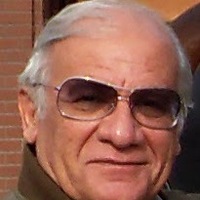A preliminary conceptual design was made of a test module for testing the BCSS lithium cooled, vanadium structure blanket concept in a tandem mirror fusion test reactor. The test module is intended to run at the correct stresses and... more
A preliminary conceptual design was made of a test module for testing the BCSS lithium cooled, vanadium structure blanket concept in a tandem mirror fusion test reactor. The test module is intended to run at the correct stresses and temperatures of a segment of the blanket, while operating at reduced neutron wall loadings. Although this approach ties the effort to
Research Interests:
A pseudo-line source has been realized by using an accelerator based D-T point neutron source. The pseudo-line source is obtained by time averaging of continuously moving point source or by superposition of finely distributed point... more
A pseudo-line source has been realized by using an accelerator based D-T point neutron source. The pseudo-line source is obtained by time averaging of continuously moving point source or by superposition of finely distributed point sources. The line source is utilized for fusion blanket neutronics experiments with an annular geometry so as to simulate a part of a tokamak reactor.
Research Interests:
Research Interests:
ABSTRACT The US is proposing two “look-alike” sub-modules, based on helium-cooled pebble bed (HCPB) ceramic breeder, to be tested in the same test blanket module (TBM) that will occupy a quarter of a port in ITER and placed next to the... more
ABSTRACT The US is proposing two “look-alike” sub-modules, based on helium-cooled pebble bed (HCPB) ceramic breeder, to be tested in the same test blanket module (TBM) that will occupy a quarter of a port in ITER and placed next to the Japanese TBM. The TBM has a toroidal width of 73 cm, a radial depth of 60 cm and a poloidal height of 91 cm. The ceramic breeder is made of Li4SiO4 with 75% Li-6 enrichment (60% packing factor) and beryllium is used as the multiplier. The two sub-modules are arranged in two configurations, namely a layered configuration and an edge-on configuration. In the present work, we analyze these two sub-modules using two-dimensional discrete ordinates transport codes in R-θ model that accounts for the presence of the ITER shielding blanket and the surrounding frame of the port. The objectives are: (1) to examine the profiles of heating and tritium production rates in the two sub-modules, both in the radial and toroidal direction, in order to identify locations where neutronics measurements can be best performed with least perturbation from the surroundings, (2) to provide both local and integrated values for nuclear heating rates required for subsequent thermo-mechanics analysis, and (3) to compare the tritium production capabilities of two variants for the HCPB blanket concept, mainly the parallel and the edge-on configurations. We present the main findings from this study in this paper.
Research Interests:
Research Interests:
ABSTRACT Shutdown dose rate (SDDR) inside and around the diagnostics ports of ITER is performed at PPPL/UCLA using the 3-D, FEM, Discrete Ordinates code, ATTILA, along with its updated FORNAX transmutation/decay gamma library. Other ITER... more
ABSTRACT Shutdown dose rate (SDDR) inside and around the diagnostics ports of ITER is performed at PPPL/UCLA using the 3-D, FEM, Discrete Ordinates code, ATTILA, along with its updated FORNAX transmutation/decay gamma library. Other ITER partners assess SDDR using codes based on the Monte Carlo (MC) approach (e.g. MCNP code) for transport calculation and the radioactivity inventory code FISPACT or other equivalent decay data libraries for dose rate assessment. To reveal the range of discrepancies in the results obtained by various analysts, an extensive experimental and calculation benchmarking effort has been undertaken to validate the capability of ATTILA for dose rate assessment. On the experimental validation front, the comparison was performed using the measured data from two SDDR experiments performed at the FNG facility, Italy. Comparison was made to the experimental data and to MC results obtained by other analysts. On the calculation validation front, the ATTILA's predictions were compared to other results at key locations inside a calculation benchmark whose configuration duplicates an upper diagnostics port plug (UPP) in ITER. Both serial and parallel version of ATTILA-7.1.0 are used in the PPPL/UCLA analysis performed with FENDL-2.1/FORNAX databases. In the FNG 1st experimental, it was shown that ATTILA's dose rates are largely over estimated (by similar to 30-60%) with the ANSI/ANS-6.1.1 flux-to-dose factors whereas the ICRP-74 factors give better agreement (10-20%) with the experimental data and with the MC results at all cooling times. In the 2nd experiment, there is an under estimation in SDDR calculated by both MCNP and ATTILA based on ANSI/ANS-6.1.1 for cooling times up to similar to 4 days after irradiation. Thereafter, an over estimation is observed (similar to 5-10% with MCNP and similar to 10-15% with ATTILA). As for the calculation benchmark, the agreement is much better based on ICRP-74 1996 data. The divergence among all dose rate results at similar to 11 days cooling time is no more than 15% among all participants. Published by Elsevier B.V.
Research Interests:
ABSTRACT A modest approach to develop the ISPC enabling tool for fusion plasma chamber systems has been achieved. This high performance computing simulation addresses 3D physical phenomena in a complex and heterogeneous virtual fusion... more
ABSTRACT A modest approach to develop the ISPC enabling tool for fusion plasma chamber systems has been achieved. This high performance computing simulation addresses 3D physical phenomena in a complex and heterogeneous virtual fusion plasma chamber system and opens a new way for how one, such as DEMO/FNSF, ought to be designed and modeled. In the current approach, complex FNST scenarios were simulated and modeled through a community-built reflective middleware for simulation integrations involving multiple simulators. Example advancements are presented while issues and ideas are discussed to further expand the development of such a tool.
